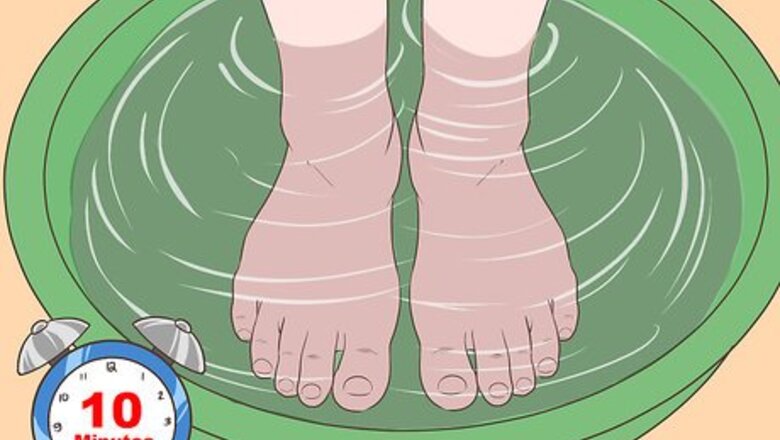
views
Trimming Thick Nails Safely

Soak your feet for 10 minutes in warm water then dry thoroughly. Before you attempt to cut your thick toenails, you should soften them by soaking them in warm water for at least 10 minutes. When you’re finished, dry your feet completely, including between your toes.
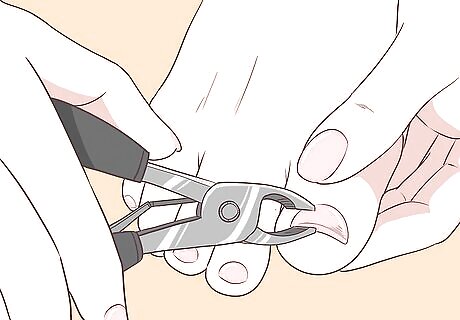
Trim your toenails using nail nippers. Nail clippers are what we typically associate with trimming nails, but these are usually not strong enough to cut through thick toenails. Use nail nippers instead. Nail nippers have a handle that is longer and easier to grip than regular nail clippers, and they are designed to cut toenails straight across.

Use small cuts and go straight across the nail. Small cuts help avoid splintering, which can be a problem with thick nails. As you’re trimming, cut straight across your nail. Don’t round the corners, as this can increase your risk for ingrown toenails.
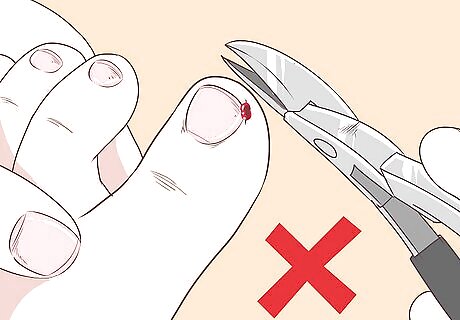
Take care not to cut yourself, especially if you have poor circulation. Conditions like diabetes which cause thickened toenails may also cause you to have poor circulation. This can result in reduced sensation in your feet, meaning you might not notice right away if you cut yourself. Untreated cuts can lead to infections and serious health complications, so be sure to pay close attention while you’re trimming your toenails.
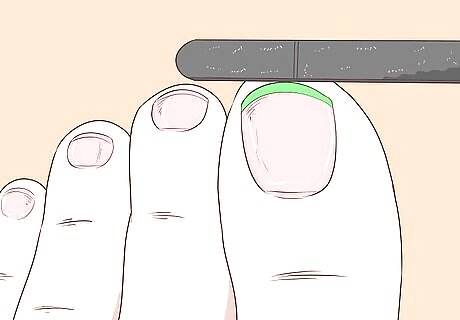
Gently file the edges of your toenails with an emery board or nail file. After you’ve trimmed your toenails, carefully use an emery board or nail file to smooth any sharp edges which might get caught on your socks.
Treating Thick Toenails

Visit your doctor to determine the cause. The cause of thick toenails can be difficult to determine just by looking at your feet. If you notice your nails becoming thick or changing color, visit your doctor. Your doctor will likely ask you questions about your lifestyle and other health problems you may have, and may take a sample to send to a lab for testing to see if you have a fungal infection. Thick toenails are most commonly caused by a fungal infection known as onychomycosis. Thickening of the nail can also be caused by repeated injury to the toenail. This is often seen in athletes, but it can also be the result of wearing improperly-fitting shoes. Other causes of thick toenails include aging and underlying conditions like psoriasis and diabetes.

Use a prescription antifungal if the cause is a fungal infection. If you are suffering from onychomycosis, your doctor will prescribe you an antifungal treatment. These can come in the form of a cream or ointment or an oral medication. Your doctor might also recommend a laser treatment to destroy the fungus. Treating severe cases of fungal infection may require the removal of the nail in order to fully treat the nail bed below. Robert Rogers, Ethnomycologist and Lichenologist Thickened, discolored toenails are often caused by fungal infections that have built up over time. Topical antifungal creams containing tea tree oil or tolnaftate can penetrate nails to fight infections. For severe cases, oral medications or surgical removal may be required to restore healthy nail growth.
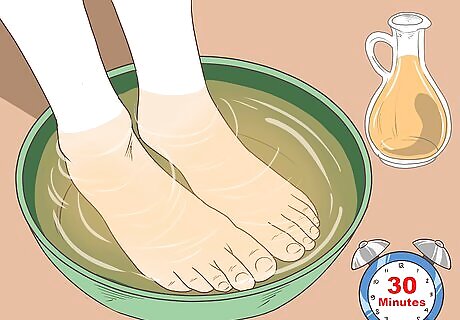
Soak your feet in vinegar for an at-home fix for fungus. The pH level of vinegar is thought to destroy nail fungus. Fill a large bowl with an even mixture of hot water and plain vinegar. Soak your feet for up to 30 minutes at a time.
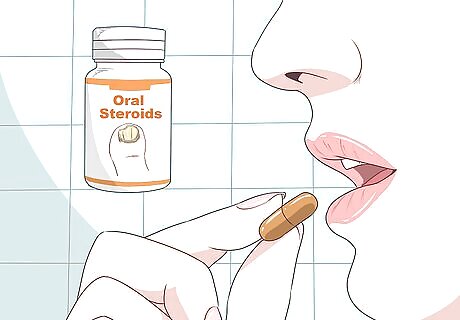
Treat psoriasis flares with steroids. If you suffer from psoriasis, a flare may affect your toenails, causing them to thicken. If you’re suffering from a flare, your doctor can prescribe steroids, which help reduce the inflammation associated with psoriasis. You may be given oral steroids, although topical creams containing steroids are used more commonly.
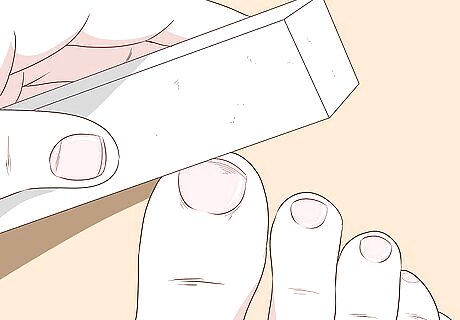
Buff your toenails if the cause of thickening is due to age. Our toenails become thicker as we get older. Although this is a natural part of aging, you can help reduce the thickness by buffing your toenails with an emery board. If you prefer, you can have this done at a nail salon that offers pedicures.

Avoid impact or squeezing if your toenails have thickened after an injury. If injury is causing your toenails to become thicker, make sure you keep your toenails cut short, wear properly-fitting shoes, and try to avoid anything coming directly into contact with your toenail. If you’re an athlete, such as an ice skater, soccer player, or dancer, your feet go through a lot of high-impact moves on a regular basis. Protect your toenails by avoiding any kicks or moves that put direct pressure on them. Thick toenails can also be caused by wearing shoes that are too tight. Wear shoes that fit properly, especially when engaging in strenuous activities.
Keeping Your Toenails from Becoming Thick
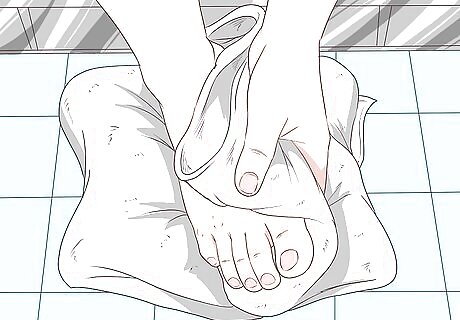
Dry your feet thoroughly after showering or swimming. Make sure you completely dry your feet after you swim or shower to ensure your feet stay healthy. If your feet are damp, they will be more susceptible to a fungal infection.

Wear shoes that fit well and let your feet breathe. Since tight shoes can cause your toenails to thicken over time, be sure that your shoes fit well and don’t crowd your toes. In addition, choose shoes which allow your feet to breathe. This will help prevent fungus from growing.
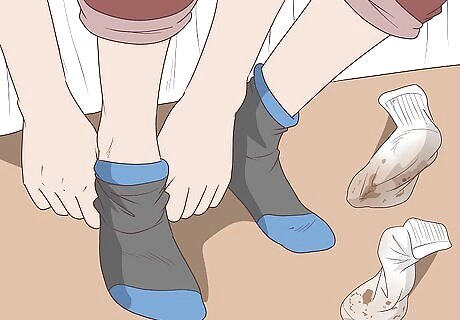
Wear clean socks every day. Clean, fresh socks will help keep your feet dry, so put on a fresh pair every day. If you sweat a lot or if you get your feet wet you may need to change your socks more often.

Wear flip flops in public showers and around swimming pools. Fungal infections prefer warm, damp places, so you are most likely to be exposed to them in a public shower or swimming pool. Protect your feet by wearing sandals or shower shoes.













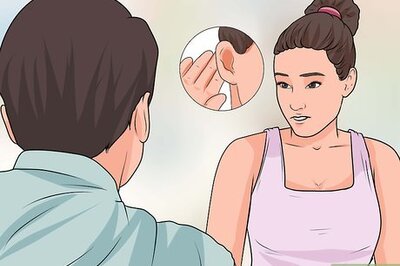




Comments
0 comment